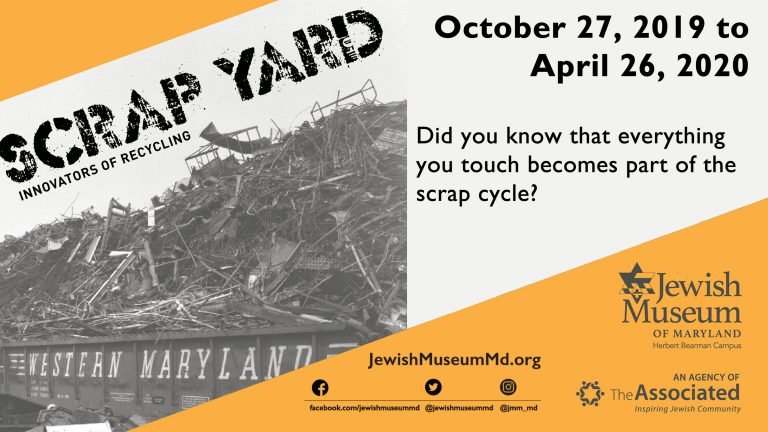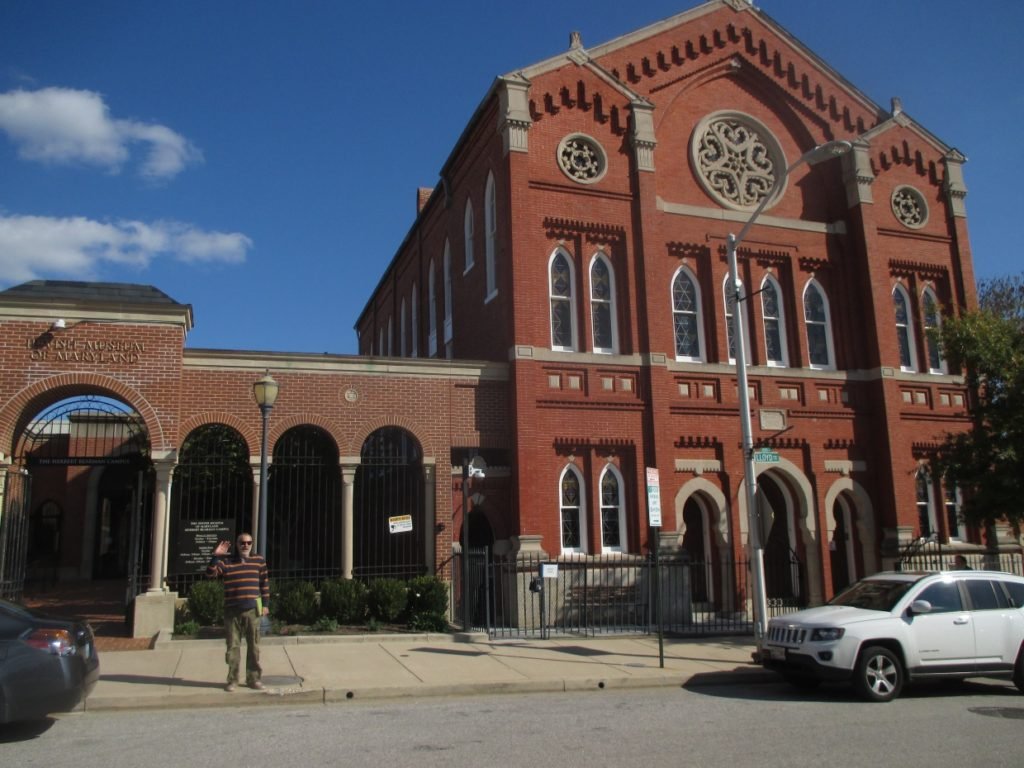
In November, we visited the Jewish Museum of Maryland which has put together a traveling exhibit called Scrap Yard: Innovators of Recycling that will run through April, 2020.

The exhibit tells the story of the scrap industry and also the people who built it up. Scrap collectors were often recent immigrants and other marginalized people, who had few other options.
I was surprised to learn that pubic opinion of the scrap industry has varied widely over the past several decades. Since the beginning, scrap has been collected due to its inherent value. During World War II, recycling supported military manufacture and therefore was considered patriotic.
Then there were times when recycling was considered “dirty” and actually detrimental to the environment. Perhaps because the recycled materials were often dirty with grease, actual dirt or because the process of reclaiming the material produced pollutants.
While materials such as paper, ferrous scrap and copper continue to have value, plastic is another story. With China heavily restricting the import of post-consumer recycling in 2017 and many other southeastern Asia countries (Malaysia, Vietnam, Thailand, and the Philippines) more recently following suit, a re-evaluation of how we handle our waste materials is long overdue.
So what do we do with all our waste materials now? A better question is do we really need to continue to generate waste at all? Zero waste packaging options are finally beginning to emerge for mainstream consumer products, thanks in part to visionary companies like Terracycle, which through its “Loop” initiative provides the products from several band name companies, in containers that can be returned, cleaned and refilled indefinitely. Even more impressive, Terracycle’s primary goal is to find new uses for materials that are not currently recycled and explore ways to make use of the mountains of pre-existing post-consumer scrap that is currently piling up at ports around the world.


